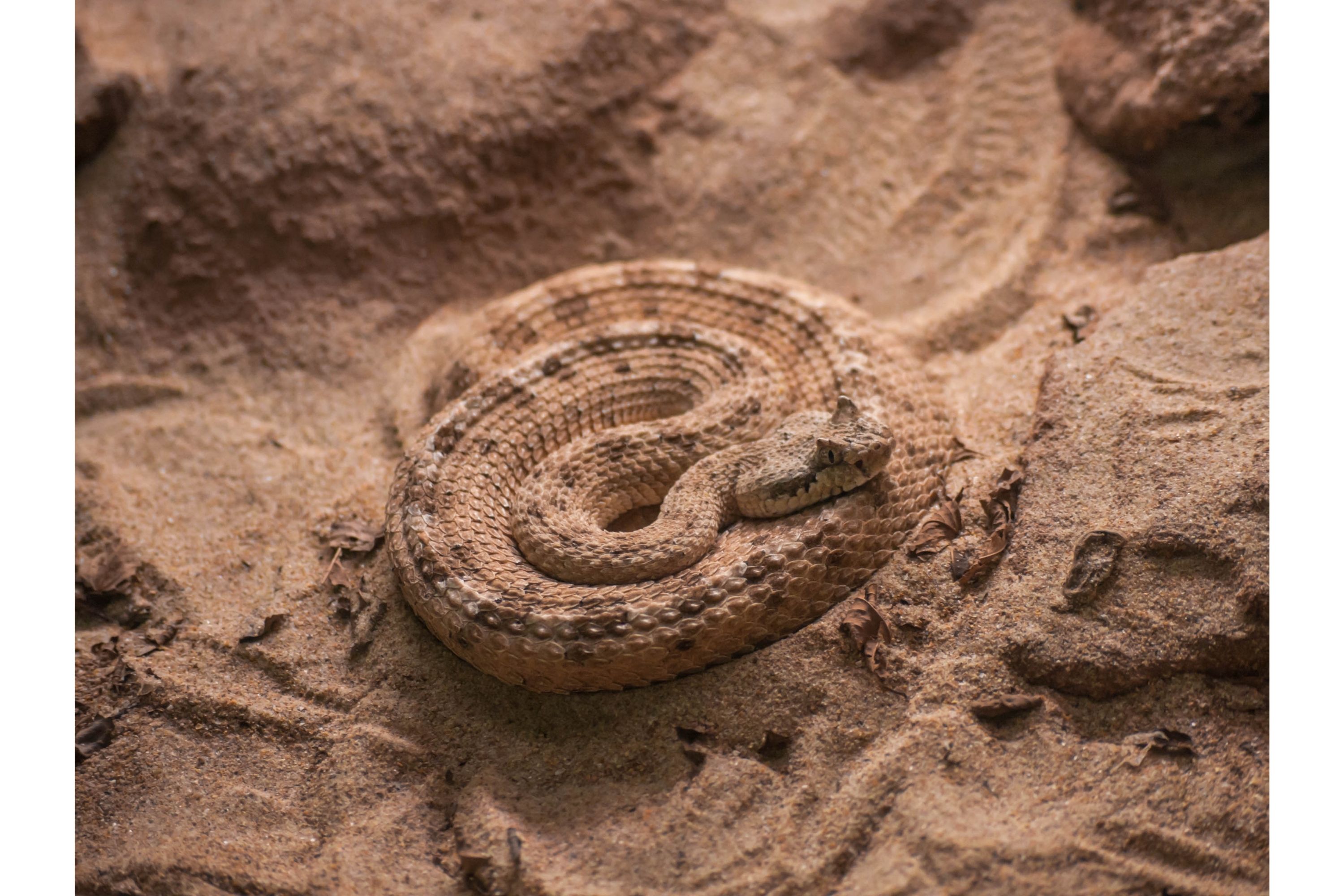Santa Catalina rattlesnake
(Crotalus catalinensis)

Description
The Santa Catalina rattlesnake (Crotalus catalinensis) is a species of venomous pit viper endemic to Isla Santa Catalina in the Gulf of California just off the east coast of the state of Baja California Sur, Mexico. No subspecies are currently recognized. A relatively small and slender species, its most distinctive characteristic is that it lacks a rattle. This species is relatively slender and stunted, growing to a maximum of 73.1 cm (28.8 in) in length. Its most distinctive feature is its lack of a rattle. The base of the tail, the "button", has degenerated to such an extent that the rattle immediately falls off with each shed instead of forming a new segment, as it does in other species of rattlesnakes. This is widely believed to be a localized adaptation for hunting birds. Of the two distinct color variations, the predominant variant has a light cream-colored base, with reddish-brown blotching down the back, and black and white banding around the tail. The other variant has a much lighter, ash gray color, with darker gray blotching. The banding around the tail is still present. This snake is found only on Isla Santa Catalina in the Gulf of California off the coast of southern Baja California. This island is also the type locality for the species. This species is classified as Critically Endangered on the IUCN Red List with the following criteria: B1ab(v) (v3.1, 2001). This means that the best available evidence indicates it is considered to be facing an extremely high risk of extinction in the wild because its geographic range is estimated to be less than 100 km2, it exists at only a single location, and a continuing decline has been observed, inferred, or projected in the number of mature individuals. It was assessed in 2007. It is threatened due to collecting and the introduction of alien predator species, such as feral cats. The habitat on Santa Catalina Island consists of Gulf Coast desert plants. This snake is often found on the western side of the island within the many arroyos. Laurence Klauber (1972) suggested this species is closely related to C. scutulatus. However, a later study by Murphy and Crabtree (1985) used allozyme data to conclude it shares its most recent ancestor with C. ruber. Most of the morphological, biogeographic, and biochemical data suggest the same.
Taxonomic tree:







